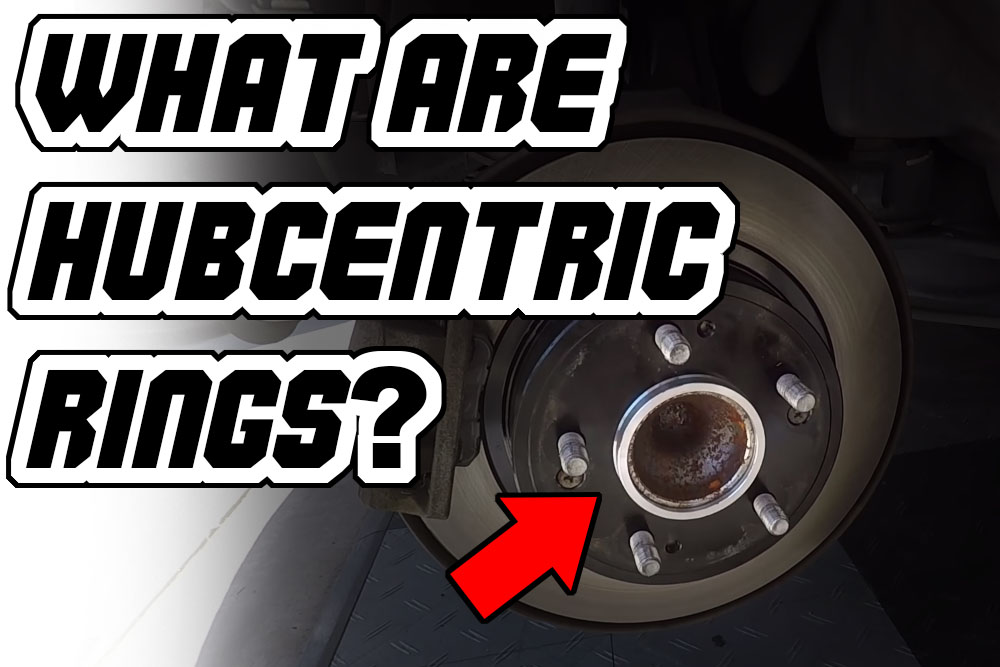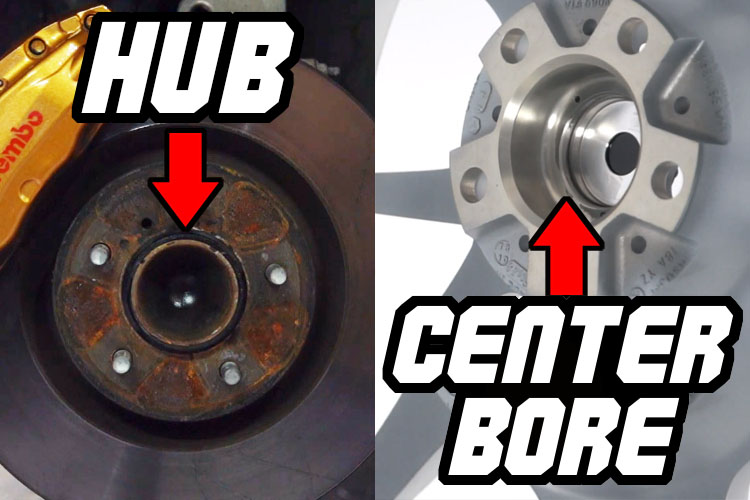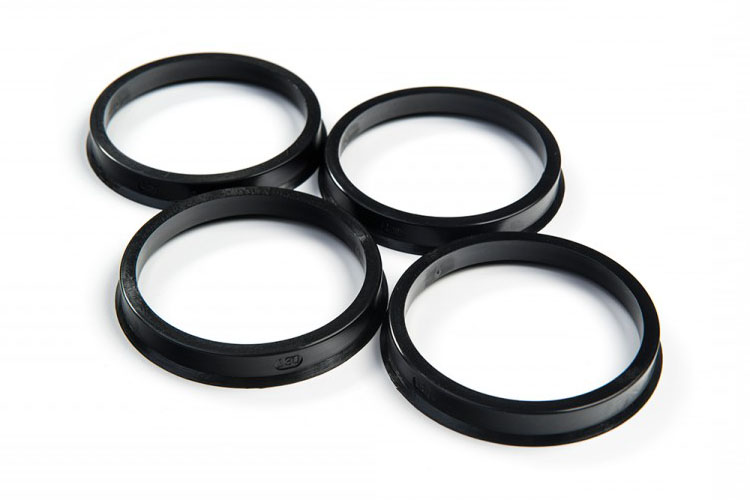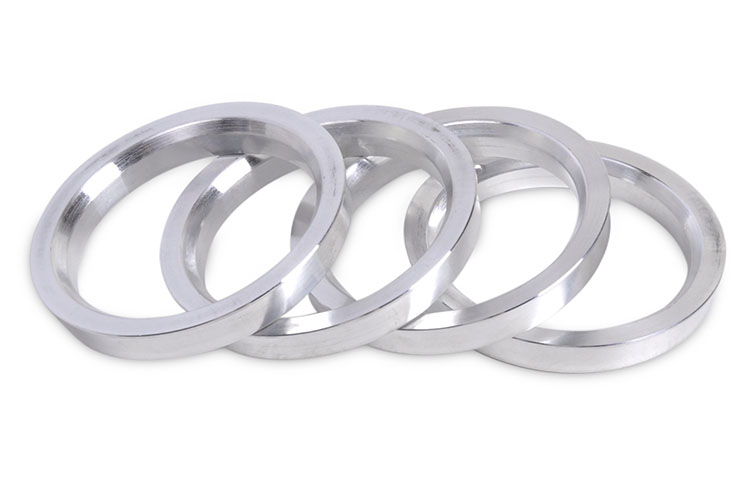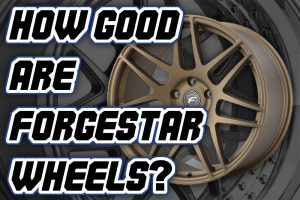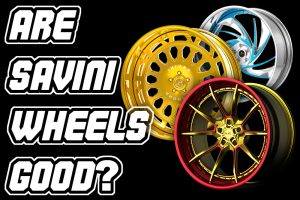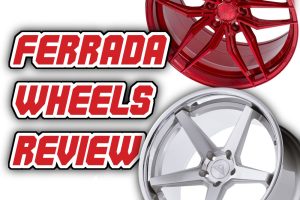What Are Hubcentric Rings and Are They Required For Wheels?
If you’ve gone to install your new wheels and noticed that they don’t sit properly on the hub, you probably need hubcentric rings.
Not having hubcentric rings can cause vibrations, make installing your wheels difficult, and increase the chances that your wheels are not installed correctly which could cause them to fall off (literally).
In this post, I’m going to explain what hubcentric rings are, why you need them, how to get the right ones, how to install them and everything else you need to know.
What Are Hubcentric Rings?
Every car has hubs that the wheels mount too, and every wheel has a center bore which is meant to sit tight up against the hub and ensure the wheel is perfectly centered.
However, different cars have different hub sizes, and when installing aftermarket wheels or wheels form a different car, chances are the wheels have a different center bore size than your hub.
Hubcentric rings are rings designed to sit between the wheel’s center bore and the car’s hub to fill in the gap and ensure that the wheel is sitting perfectly central.
Why Do You Need Hubcentric Rings?
In order for a wheel to be installed correctly, it needs to be sitting exactly central to the rotating axis of the hub so that it rotates evenly. If the wheel is even slightly off, it will rotate in an egg shape, causing vibrations and over a long enough period, the nuts or bolts will loosen and fall off.
Wheels are designed with a center bore that sits tight up against the hub to prevent this from happening and to ensure that the wheel can only be installed in the proper position.
However, if your new wheels have a larger center bore than your car’s hubs (common on aftermarket wheels so that they can fit many cars), you need hubcentric rings to fill the gap and make sure your wheels are centered.
It is also debatable whether the hub actually carries some of the load of the car, and if you don’t have hubcentric wheels or rings, that the studs or bolts will be taking all the load and it increases the chances of the studs or bolts breaking.
There doesn’t seem to be a definitive answer as to whether this is true or not, but it’s something else to also take into consideration.
I personally think that the hubcentric rings will, at the very least, eliminate the possibility of the wheel moving around under load, which decreases the chances of anything bad happening.
How to Tell If You Need Hubcentric Rings For Your Rims
An easy way to tell if you need hubcentric rings is to measure the hub of your car and the center bore of the wheels. If they are matching, the measurement will be the same. If not, you need hubcentric rings.
Another way to tell is to take the wheel and put it on the hub. If you have studs, this will be easy. Without putting the nuts on, try to move the wheel up and down. There should be no play. If there is play, you need hubcentric rings.
On cars that use bolts (many European cars), put the wheel to rest on the hub and see if all the bolt holes line up. If not, you need hubcentric rings. You should also not be able to move the wheel up and down while it is pushed up against the hub and mounting face. If there is play, you need hubcentric rings.
Can You Drive Without Hubcentric Rings?
Technically, yes you can, but it’s not a good idea. The reason why is that the odds of your wheels being off-center and not mounted correctly is extremely high. At the least you will probably have vibrations which will be uncomfortable, and at worst your wheel nuts or bolts could work loose and cause the wheel to fall off.
Now, if you are in a jam and absolutely need to drive the car, you can put the wheels on to drive it. Just try to avoid any hard driving and get hubcentric rings as soon as you can, and don’t blame me if something goes wrong.
If you are going to put the wheels on without hubcentric rings, you will want to do the wheel bolts or nuts up while the car is in the air, to give the wheel the best chance of centering.
If you do them up hand tight and then lower the car before doing them up (like you would normally), you can guarantee that you wheels are going to be off-center due to the load of the car causing them displace.
How to Measure and Find the Right Size For Your Hubcentric Rings?
The important thing to note here is that there are many sizes of both wheel center bore and hub, so you need to measure your specific ones to see which hubcentric rings you need. You want to be as accurate as possible with the measurement, down to .1 of a millimeter.
NOTE: Hubcentric rings are almost always in millimeter sizes.
In order to measure which size you need, you need to take two measurements:
- The outer diameter of your hub. You may need to use a Vernier caliper to get an accurate measurement. It is also usually possible to look this measurement up online by searching your car’s model. This will be the inner diameter (ID) of the hubcentric ring.
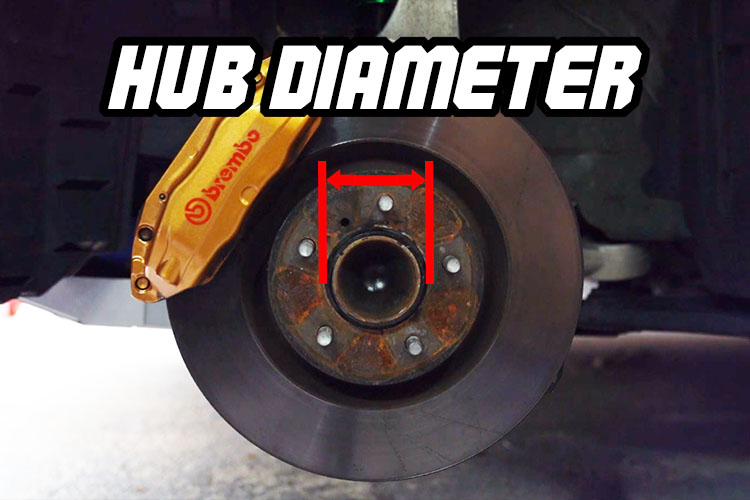
- The inner diameter of the wheel’s center bore. This will be the outer diameter (OD) of the hubcentric ring.
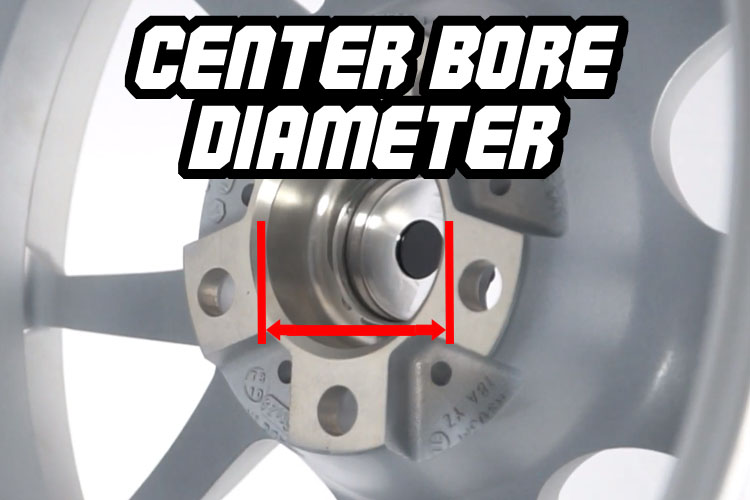
The bigger number will always be the outer diameter of the hub centric ring, and the smaller number will be the inner diameter.
NOTE: If by some chance you find that the wheel’s center bore is smaller than your car’s hubs, the wheels WILL NOT FIT. The only thing you can do here is get the wheel’s center bores machined out to match your car’s hubs, if there is enough material on the wheels to do so safely.
Common Hubcentric ring sizes
Here are some of the most common sizes for hub rings which may help you to find the ones you need.
- Most Aftermarket wheels: 73mm center bore
- Most Nissans: 66.1mm hub
- BMW (Except E39): 72.56mm hub
- BMW E39: 74.1mm hub
- BMW 4×100 (E30, E21 etc): 57.1mm hub
- Many Toyotas (including Supra Mk3 & Mk4 and MR2 89-99): 60.1mm hub
- Honda 5 lug: 64.1mm hub
- Honda 4×100: 56.1mm hub
- Porsche 911: 71.5/71.6mm hub
- Mistubishi DSM and Evo 8,9,10: 67.1mm hub
- Subaru WRX: 56.1mm hub
- Volkswagen 4 and 5 lug: 57.1mm
NOTE: There are many variations to hub sizes. The above is just to give you a guide and is not a complete list. Please do your research by searching “[your car model] hub size” online, or use the following website to find the right hub size for your car: https://www.wheelfitment.eu.
Buying the Right Hubcentric Ring Size
When going to purchase hubcentric rings, make sure to select the right size. Hubcentric rings are typically listed in the following format:
ODmm-IDmm
So if your wheel’s centerbore is 73mm (hub ring OD) and your hub is 66.1mm (hub ring ID), the hubcentric ring you would need is 73mm-66.1mm.
Plastic Vs Aluminium – Different Types of Hub Rings
Before you buy your hubcentric rings, there is one more thing you need to select. What material the hubcentric rings are made of.
There are typically two options for hubcentric rings: plastic and aluminium. Both have their pros and cons.
Plastic
Pros
- Cheaper than aluminium
- Less likely to seize to the hub, and easy to break off if you have to
Cons
- Not as durable, can get damaged if you are constantly taking the wheels on and off
- Can melt or distort under high temps, typically only seen under hard track use with lots of heavy braking
Aluminium
Pros
- More durable, won’t get damaged easily if you are taking the wheels on and off a lot.
- Handle high temps better, won’t melt or distort like plastic ones under heavy track use
Cons
- Can be more prone to seizing due to corrosion and different metals expanding at different times (this can be minimized with anti-seize)
- Usually a bit more expensive than plastic ones
Which Should You Choose?
Honestly, it’s not really a big deal either way. Many people use both types without issue, even on the track. Personally I like to use aluminium ones when possible, as they are more durable. Just remember to put the anti-seize on and you won’t have any issues.
GET QUALITY HUBCENTRIC RINGS HERE FOR THE BEST PRICE
Installing Your Hubcentric Rings
Now that you’ve got your hubcentric rings, it’s time to install them.
First you need to jack the car up and remove the wheels.
You’ll want to clean up the area around the hub where the rings will sit, to remove and dirt and rust and ensure they can slide on nicely and sit fully in place. You can use a wire brush or sandpaper to do this.
Now, take the hub ring and make sure it is the right size for the car by sliding it onto the hub. It should slide on easily but should not have any room to move around or wiggle.
Now, test the wheel size by putting it inside the wheel’s center bore and make sure it sits tight there as well.
If the rings pass both of these tests, you have the right size.
If you are using aluminium rings, put some anti-size on the hub where the ring with sit, and on the outside on the ring. This will prevent it from seizing and make removing the wheels later on easier.
Now you can either place the hubcentric ring on the hub or in the wheel center and then put the wheel on. Personally I like to put it on the hub as it eliminates the chance of it falling out of the wheel as I am putting the wheel on.
Now check to make sure there is no play at the center of the wheel, just to be sure, and then do the wheel bolts up as normal.
If there is play at the center of the wheel, something is wrong. Check to make sure the hubcentric ring didn’t fall out while you were putting the wheel on, and make sure it is sitting correctly.
Conclusion
That’s it! If you followed this guide up to this point you will now have the correct hubcentric rings on your car and will be sure that your wheels are installed properly and you don’t have any vibrations or risk your wheels falling off.
To get hubcentric rings for your wheels, click here:
GET QUALITY HUBCENTRIC RINGS HERE FOR THE BEST PRICE
Some FAQ Regarding Hubcentric Rings
Are Hubcentric Rings Needed For Wheel Adapters?
If the center bore of the adaptor doesn’t match the hub, or the wheel’s center bore doesn’t match the adapters hub (or both), then yes, they will need hubcentric rings.
Do Hubcentric Rings Come With Wheels Or Separately?
Typically wheels will come without hubcentric rings and you will need to order them separately. Most wheel and tire shops that sell wheels will also sell hubcentric rings. Otherwise, you can get them here.
Do Hubcentric Rings Need Lube?
It is a good idea to use lube on aluminium hubcentric rings to prevent them from seizing. Plastic ones typically don’t need lube, but it can’t hurt to put some on.
Do I Still Need Hubcentric Rings When Conversion to Studs?
Yes, it does not matter whether you are using studs or bolts, if your wheels are not hubcentric to your hubs, you will need hubcentric rings.
What Are Hubcentric Rings Made Of?
Hubcentric wheels are typically either made out of ABS plastic or billet aluminium.
How Long Do Hubcentric Rings Last?
Hubcentric rings typically do not wear out, so unless they get damaged in some way they should last for many years.
Will Hubcentric Rings Stop Vibration?
If the vibration of a result of your wheels being mounted off-center, then yes, hubcentric wheels will stop the vibration, as they will ensure that your wheels are mounted properly. If you have wheels that are not hubcentric, chances are that that is the cause of the vibration.
GET QUALITY HUBCENTRIC RINGS HERE FOR THE BEST PRICE
- BC Racing BR Series VS Tein Flex Z Coilovers - April 15, 2024
- The Pros and Cons of Shock Body Vs Spring Perch Coilover Height Adjustment - April 13, 2024
- Monotube Vs Twin Tube Shocks: The Ultimate Guide - April 11, 2024

